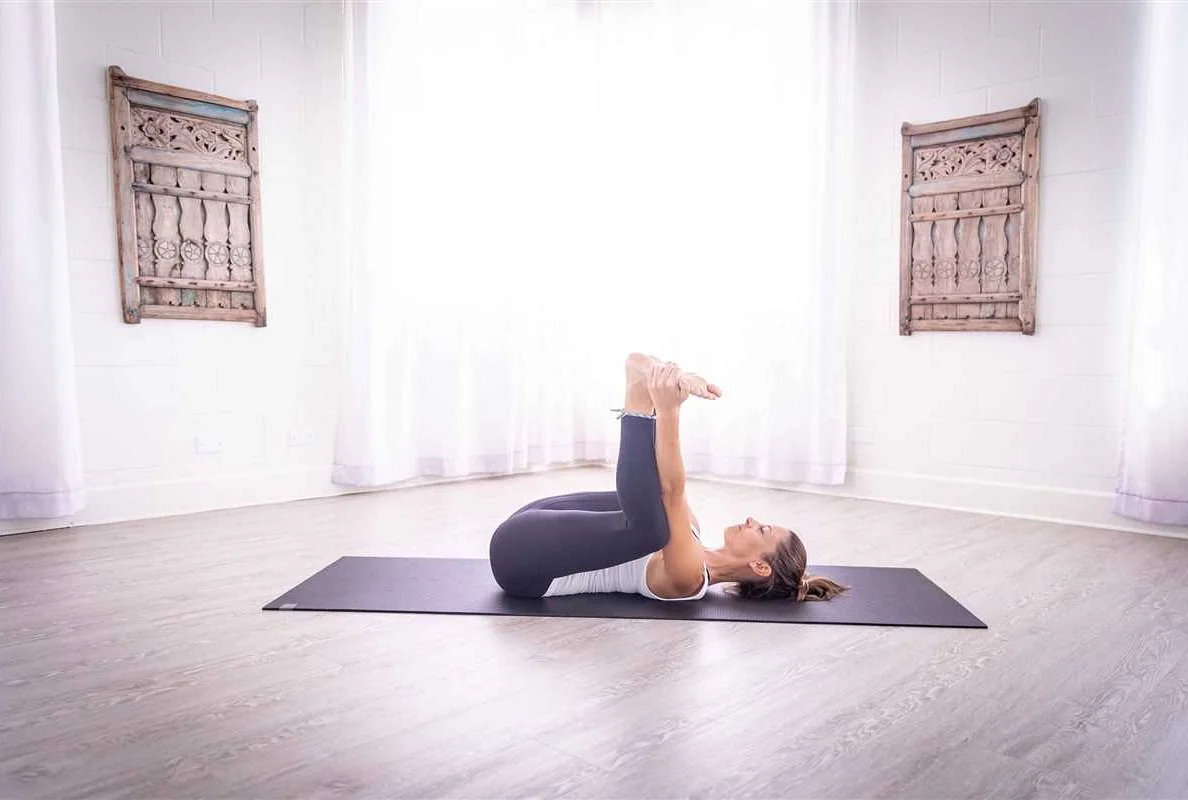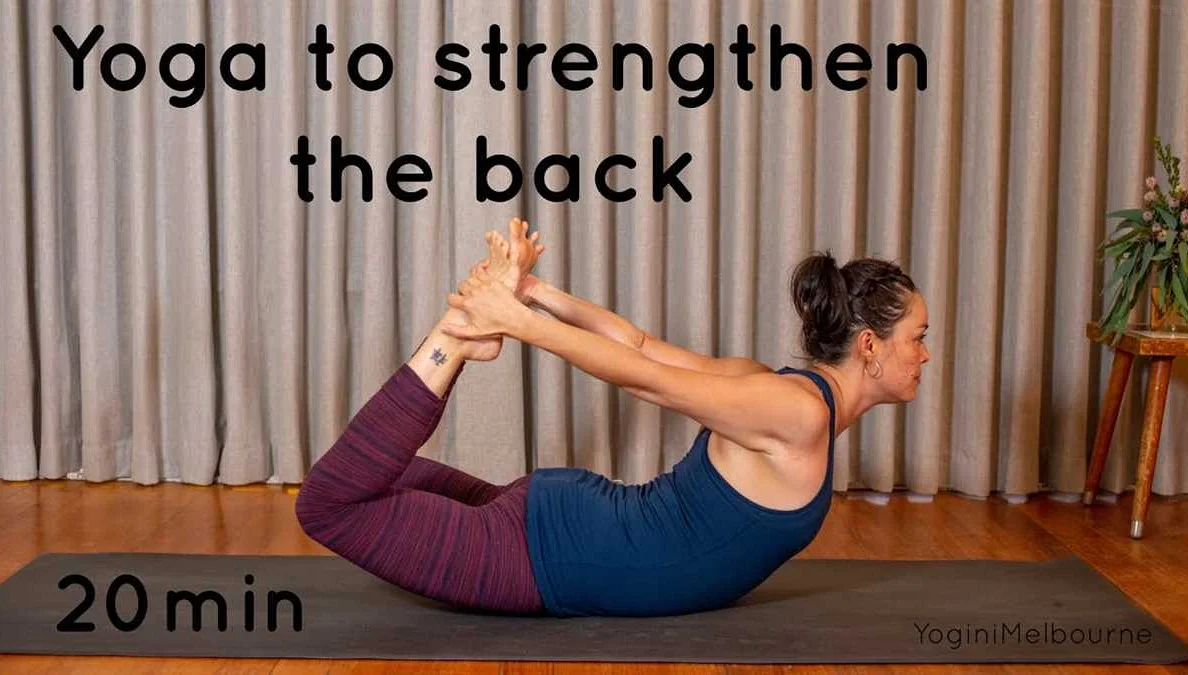Yoga exercises to strengthen your back – a beginner’s guide
Содержимое
Discover a beginner-friendly yoga practice to strengthen and support your back. Improve your posture, alleviate back pain, and develop a stronger and more flexible spine through gentle and targeted yoga poses. Start your journey to a healthier back with these easy-to-follow yoga exercises today.
Welcome to the world of yoga, where you can find solace, strength, and balance. If you are a beginner looking to embark on this beautiful journey, you have come to the right place. In this article, we will explore how yoga can help you strengthen your back and improve your overall well-being.
The back is the foundation of our body, and a strong back is essential for a healthy and pain-free life. Yoga offers a holistic approach to back strengthening, focusing not only on the physical aspect but also on the mental and emotional well-being. By practicing yoga regularly, you can improve your posture, increase flexibility, and alleviate back pain.
Here are some essential yoga practices that will help you strengthen your back:
1. Mountain Pose (Tadasana): This simple standing pose is the foundation of all yoga poses. It helps improve posture and strengthens the muscles of the back, legs, and abdomen. Stand tall with your feet hip-width apart, align your spine, engage your core, and breathe deeply.
2. Cat-Cow Pose (Marjaryasana-Bitilasana): This gentle flowing sequence of poses helps to warm up the spine and increase flexibility. Start on all fours, with your hands directly under your shoulders and your knees under your hips. Inhale, arch your back and lift your tailbone up for the cow pose, and then exhale, round your spine and tuck your chin for the cat pose.
3. Downward-Facing Dog Pose (Adho Mukha Svanasana): This pose is a great way to stretch and strengthen the entire body, including the back, shoulders, and hamstrings. Start on all fours, then lift your hips up and back, forming an inverted “V” shape with your body. Press your palms into the mat and lengthen your spine.
Remember to listen to your body and never push yourself beyond your limits. Start with these beginner-friendly poses, and gradually progress to more challenging ones as you build strength and flexibility. With regular practice, you will not only strengthen your back but also experience a sense of calm and well-being.
So, roll out your yoga mat, take a deep breath, and let the healing power of yoga guide you towards a healthier and stronger back. Namaste!
Benefits of Yoga for the Back
Yoga is a powerful practice that can provide numerous benefits for the back. Here are some of the key advantages:
- Improved flexibility: Yoga poses help to stretch and elongate the muscles in the back, promoting increased flexibility and range of motion. This can help to alleviate stiffness and reduce the risk of injury.
- Strengthened muscles: Many yoga poses target the muscles in the back, including the erector spinae and the deep core muscles. Regular practice can help to strengthen these muscles, providing greater support for the spine and improving posture.
- Relief from back pain: Yoga has been shown to be effective in reducing chronic back pain. The combination of gentle stretching, strengthening, and relaxation techniques can help to alleviate tension and improve overall comfort.
- Increased spinal health: Practicing yoga can help to improve the health of the spine by promoting proper alignment and decompressing the vertebrae. This can help to reduce the risk of spinal degeneration and maintain good posture.
- Enhanced body awareness: Yoga encourages mindful movement and body awareness. This can help individuals to become more attuned to their posture and movement patterns, allowing them to make adjustments to prevent stress and strain on the back.
- Reduced stress and tension: Yoga incorporates deep breathing, relaxation techniques, and meditation, which can help to reduce stress and tension in the body and mind. This can have a positive impact on back health, as stress and tension can contribute to muscle tightness and discomfort.
Overall, incorporating yoga into your routine can provide significant benefits for the back, improving flexibility, strength, and overall spinal health. It is important to consult with a qualified instructor to ensure proper technique and to modify poses as needed for your individual needs and abilities.
Understanding Proper Posture

Proper posture is essential for maintaining a healthy back and preventing back pain. When we have good posture, the bones of the spine are aligned in their natural curves, which allows for optimal functioning of the muscles, ligaments, and joints. On the other hand, poor posture can lead to muscle imbalances and increased stress on the spine, which can result in pain and discomfort.
Here are some key points to keep in mind when it comes to understanding proper posture:
- Alignment: Proper alignment involves maintaining a straight line from the ears to the shoulders, hips, and ankles. This means avoiding slouching or hunching over and keeping the spine in a neutral position.
- Engagement: Engaging the core muscles, including the abdominal and back muscles, can help support the spine and promote proper posture. This involves gently pulling the belly button towards the spine and lifting through the chest.
- Avoiding excessive sitting: Prolonged sitting can lead to poor posture, as it puts pressure on the spine and encourages slouching. It’s important to take breaks and incorporate movement into your day to counteract the effects of sitting for long periods.
- Ergonomics: Creating an ergonomic work environment can help maintain proper posture. This includes using a supportive chair, positioning the computer monitor at eye level, and keeping the keyboard and mouse within easy reach.
- Stretching and strengthening: Regular stretching and strengthening exercises can help improve posture by increasing flexibility and strength in the muscles that support the spine. Incorporating exercises such as cat-cow, cobra pose, and bird dog can be beneficial.
By understanding and practicing proper posture, you can support the health of your back and reduce the risk of developing back pain. Incorporating yoga into your routine can also be an effective way to improve posture and strengthen the muscles that support the spine.
Gentle Back-Strengthening Yoga Poses

If you’re looking to strengthen your back and reduce discomfort, incorporating gentle yoga poses into your routine can be extremely beneficial. Here are some essential back-strengthening yoga poses that can help improve your posture and relieve tension:
- Child’s Pose (Balasana): This pose gently stretches the lower back, relaxes the spine, and promotes a sense of calm.
- Cat-Cow Pose (Marjaryasana-Bitilasana): This gentle flowing movement helps to warm up the spine, increase spinal flexibility, and strengthen the muscles in the back.
- Downward-Facing Dog (Adho Mukha Svanasana): This pose strengthens the entire back, lengthens the spine, and opens up the shoulders and hamstrings.
- Bridge Pose (Setu Bandha Sarvangasana): This pose targets the lower back and glutes, helping to strengthen the muscles in that area and improve overall spinal alignment.
- Cobra Pose (Bhujangasana): This backbend pose helps to strengthen the entire back, including the muscles in the upper back and shoulders.
- Locust Pose (Salabhasana): This pose targets the muscles in the lower back, buttocks, and legs, helping to build strength and improve posture.
Remember to approach these poses with kindness and listen to your body. If you have any existing back issues or injuries, it’s always a good idea to consult with a yoga instructor or healthcare professional before attempting these poses.
By regularly practicing these gentle back-strengthening yoga poses, you can gradually improve your back strength, reduce discomfort, and enjoy better overall spinal health.
Building Core Strength for a Healthy Back
When it comes to maintaining a healthy back, having a strong and stable core is key. The core muscles, which include the abdominals, obliques, and deep back muscles, provide support and stability to the spine. By strengthening these muscles, you can improve your posture, reduce the risk of back pain, and increase overall strength and flexibility in the back.
There are several yoga poses that can help you build core strength and support a healthy back:
- Plank Pose: Start in a push-up position with your hands directly under your shoulders and your legs extended behind you. Engage your core muscles and hold the position for 30 seconds to 1 minute.
- Boat Pose: Sit on the mat with your knees bent and your feet flat on the ground. Lean back slightly and lift your feet off the ground, balancing on your sit bones. Extend your arms forward parallel to the ground. Hold the pose for 30 seconds to 1 minute.
- Side Plank: Start in a plank position and then shift your weight onto your right hand and rotate your body to the right, stacking your left foot on top of your right. Lift your left arm towards the ceiling. Hold the pose for 30 seconds to 1 minute, then switch sides.
- Bridge Pose: Lie on your back with your knees bent and your feet flat on the ground. Press your feet into the mat and lift your hips towards the ceiling, engaging your core and squeezing your glutes. Hold the pose for 30 seconds to 1 minute.
- Forearm Plank: Start in a plank position and then lower down onto your forearms, keeping your elbows directly under your shoulders. Engage your core muscles and hold the position for 30 seconds to 1 minute.
Remember to listen to your body and modify or skip any poses that cause pain or discomfort. Building core strength takes time and consistency, so practice these poses regularly to see improvements in your back health.
In addition to these yoga poses, incorporating other exercises such as Pilates, weight training, and aerobic activities can also help strengthen your core muscles and support a healthy back. By making core strengthening a regular part of your fitness routine, you can improve your posture and reduce the risk of back injuries.